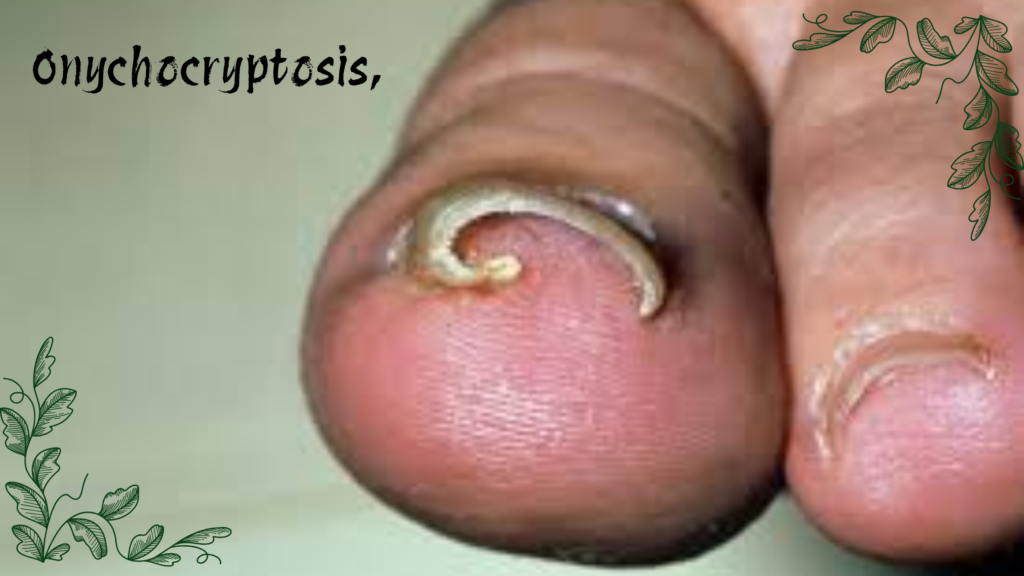Onychocryptosis, commonly known as ingrown toenail, is a condition where the edge or corner of a toenail grows into the surrounding skin, causing pain, inflammation, and sometimes infection.
🦶 What is Onychocryptosis?
- The nail pierces the skin of the nail fold
- Usually affects the big toe
- Can lead to redness, swelling, and pus if infected
🔍 Causes
- Improper nail trimming (cutting nails too short or rounding edges)
- Tight or ill-fitting shoes
- Trauma to the nail (injury or repeated pressure)
- Genetic predisposition (curved or thick nails)
- Poor foot hygiene
⚠️ Symptoms
- Pain and tenderness along the nail edge
- Redness and swelling of the nail fold
- Infection signs: pus, foul smell, warmth
- Difficulty wearing shoes or walking
🛠️ Stages of Ingrown Toenail
| Stage | Description |
|---|---|
| Stage 1 | Mild pain and redness, no infection |
| Stage 2 | Increased pain, swelling, possible infection |
| Stage 3 | Chronic infection, granulation tissue formation |
🩺 Treatment
✅ Conservative Care (Early Stages)
- Soak foot in warm water 3-4 times daily
- Keep foot clean and dry
- Wear open-toed or loose-fitting shoes
- Avoid cutting nail too short; trim straight across
- Use cotton or dental floss under the nail edge to lift it gently
💉 Medical Intervention
- Antibiotics if infection present
- Partial nail removal (partial nail avulsion)
- Nail matrixectomy (removal of nail root to prevent recurrence)
- Surgery in severe or recurrent cases
🛡️ Prevention
- Trim nails straight across, not too short
- Avoid tight shoes or socks
- Maintain foot hygiene
- Avoid trauma to toes
